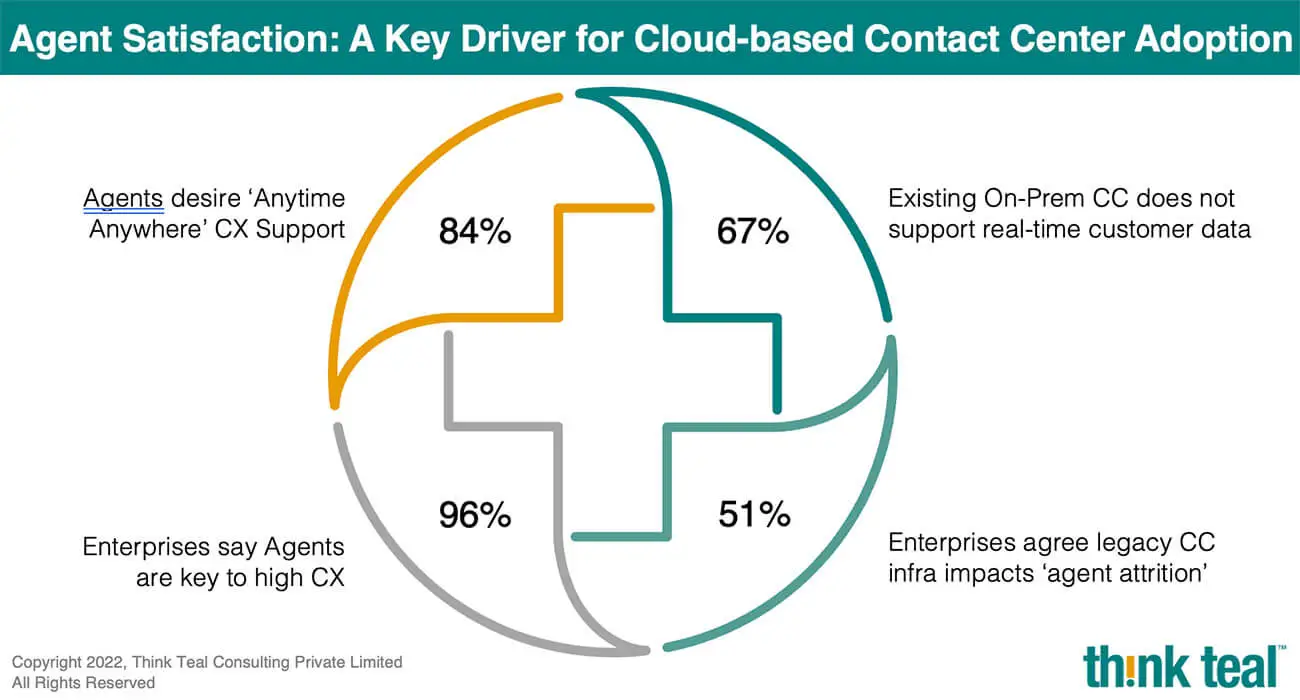Cloud Contact Center: The Future of Work in ITeS?
An American marketing adage says, "if you treat your employees like gold, they will treat your customers as diamonds". This holds true for any sector but becomes more relevant where human capital is the primary lever of success.
IteS has more than 3.5 million direct employees, making it one of the biggest industries for a skilled workforce. The last two years saw many "firsts" for this sector, as remote work as a concept was introduced to keep business continuity. For an industry which is highly regulated and process-driven, this change was not an easy one to manage.
Also, last year we saw a wave of mass resignations. Although a trend witnessed more in the IT sector, the ITeS sector has always struggled with attrition given the employee demographics. Along with compensation, today's employees want choices: freedom to work from anywhere, higher productivity through first call resolutions, and advanced technologies like AI and Analytics to expedite regular queries.
Given this shift, Cloud Contact Center, in parts, has answers to many of these requirements. Attributes like the ease of deployment, management, and scale make it ideal for organizations of today, especially those who don't have lots of legacy infrastructure. A reason why we see the Cloud Contact Center market growing at a healthy rate of 12-14% CAGR.
However, considering many established players have been in business for more than two decades, the concept of rip and replace might not find many takers. They are coupled with challenges around data sovereignty, concerns around the long-term cost of hosting, and issues related to migration and integration.
We believe the decision depends on which stage and scale an organization operates to a certain extent. While large entities will have a measured view, SMBs or new setups will have a higher proclivity toward Cloud Contact Centers. For the time being, some of the larger setups are toggling with on-premise and cloud-based and experimenting with a hybrid approach.


